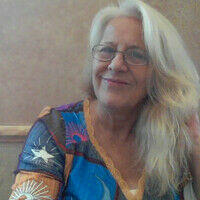In 2008, I wrote an article for Being Jewish magazine about a dream that already felt larger than me: building a Jewish library in Vilna—Vilnius, the Jerusalem of Lithuania. At the time, I thought I was documenting a journey. I didn’t yet understand that I was recording the opening chapter of a responsibility that would shape the rest of my life.
While writing that article, I spent long days in the building known as the Green House, part of the Vilna Gaon Jewish Museum. That was where I came to know Rachel Kostanian—a survivor, a scholar, a guardian of memory, and one of the most extraordinary human beings I have ever met. We drank tea. We talked. We sat with history not as an abstraction, but as something still breathing, still fragile.
There, I touched original posters that had once hung inside the Vilna Ghetto.
Paper that had survived hunger, terror, and time. Paper that had been placed on walls by people who knew the reality surrounding them and still chose culture, learning, and community. I felt infinite sadness touching those posters—and at the same time infinite respect. Those feelings arrived together and have never separated.
One poster in particular broke through everything: the announcement that 100,000 titles had been checked out from the Vilna Ghetto Library.
In a place built to erase humanity, people were still borrowing books. Still reading. Still counting knowledge as something worth celebrating. That poster wasn’t just information—it was defiance.
There was no way for me to know then that in 2009 I would be the one who saved the Vilna Ghetto Library from sale and destruction. I didn’t know that the history I was holding in my hands would soon ask something concrete of me. I only knew that books mattered, and that Jewish culture survives because ordinary people refuse to let it disappear.
A hardcover book titled Vilna Ghetto Posters was later published by Rachel and others. I bought a copy. I had Rachel and the contributors sign it. And then I donated it to my library—because such things are not meant to be owned. They are meant to be shared, safeguarded, and kept alive.
Looking back now, I see the thread clearly. The article. The Green House. The posters. The book. The library. None of it was accidental. It was a long conversation with history that I answered step by step, often without realizing where it would lead.
And today, remembering all of this, I am crying.
Not only for what was lost—but for what endured. For the people who put those posters on the walls. For the librarians who counted books instead of surrendering to despair. For Rachel, who carried memory forward with fierce grace. And for the younger version of myself who didn’t yet know how much this would come to mean, but showed up anyway.
It mattered then.
It matters now.
And it always will.
































December 2025 Open House Webcast
Find Your Footing on Stage 32: Join Our December Community Open House!
Monday, December 29th at 12:00 pm PT!
Every success story begins with a first step.
If you’re ready to take yours, join me, Ashley Smith, Head of Community at Stage 32, for our December Community Open House Webcast happening Monday, December 29th at 12:00 pm PT!
Free Registration: https://www.stage32.com/education/products/stage-32-s-december-community-open-house-webcast-with-ashley-smith
Whether you’re chasing representation, looking for collaborators, or simply tired of creating in isolation, this live event is your chance to show up, be seen, and start making real progress.
This isn’t just an overview — it’s your creative launchpad. You’ll walk away with practical tools, new connections, and a clear path forward, no matter your background or where you are in your career.
You’ll Learn How To:
Whether you’re a writer, filmmaker, actor, producer, composer, editor, or wear multiple creative hats — this is where your Stage 32 journey truly begins.
If you can’t attend live, don’t worry — registering ensures you’ll receive the full recording to watch anytime from anywhere.
Who’s planning to join me live for the Open House?
Copy the link below to share this page:
48 people like this